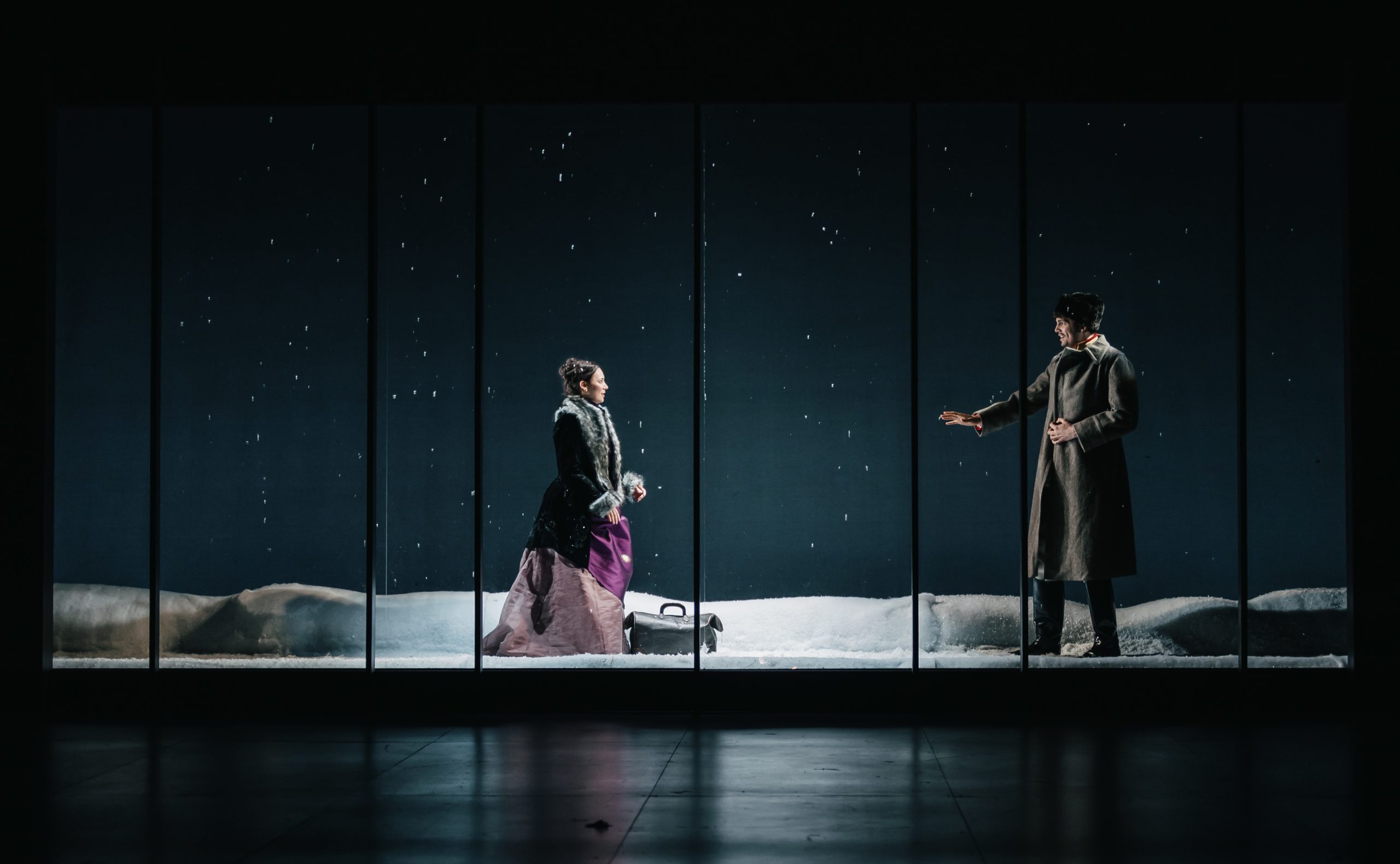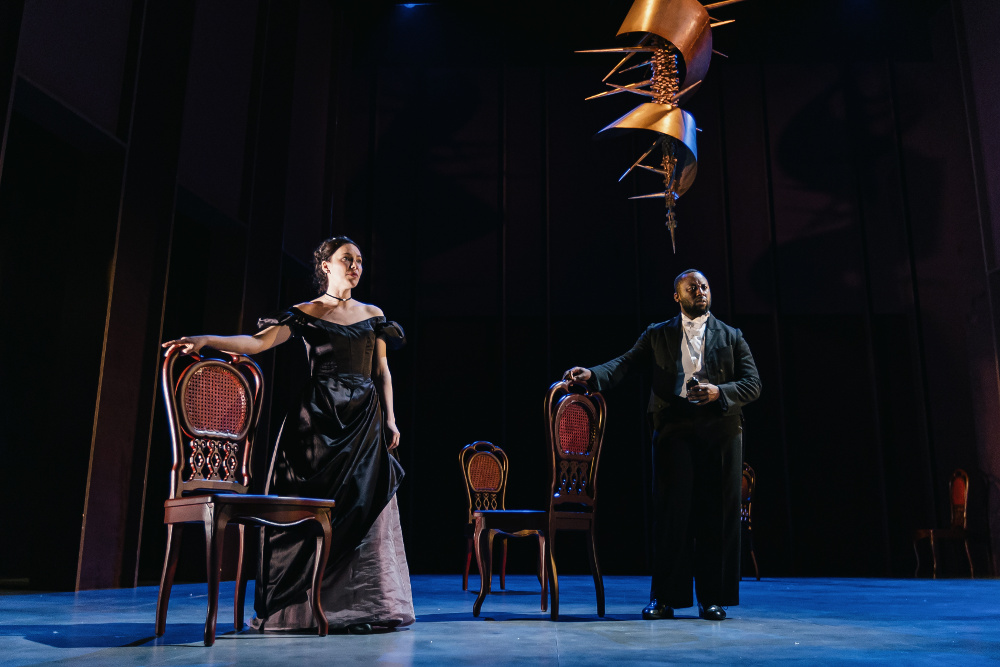Anna Karenina: on the page and on the stage
Anna Karenina: a story for our time
Anna Karenina is, I think, one of those novels that people think must be boring because it’s long and because it has a woman’s name for its title. Anna Karenina is, in my opinion, a true work of art, and a novel that in its huge scope and scale attempts something genuinely quite ambitious, and that is to understand humans’ relationships with one another, and our desire for relationships. I’m by no means saying that it’s a perfect novel, nor does it necessarily answer all questions, but as with all art, it makes the attempt all the same, knowing it cannot possibly be perfect. Now all this might sound very high and mighty, but Anna Karenina, for its status as a “classic” (whatever that means) and its reputation as “high literature” (whatever that means) is at its core still asking the basic questions that I think on some level we all want the answers to: what is love, how do we feel it, why is it so powerful, and can love truly conquer all?
As I’ve said, Anna Karenina has a huge scope, and follows lots of characters through their various, interlinked relationships over many years. People and their feelings grow and change as all people and all feelings do, and time, as it must, passes unrelentingly. It’s because of this scope that I think Anna Karenina is great food for adaptation. There are so many narrative threads to trace, so many characters to invest in, so many themes and ideas and emotions to pick at, that I can imagine many more adaptations of Tolstoy’s story are just waiting to be made. I, for one, had the privilege of watching Polina Kalinina and Lesley Hart’s stage adaptation of Anna Karenina last year and it’s a testament to the power of that production that I still think about it now. It’s not uncommon for novels to be adapted for stage, but I was struck by how this production was invested not only in reiterating Tolstoy’s story in a different format but in bringing attention to the connections between all the characters. Anna Karenina is not just a story about Anna, but about all the people around her, each with their own identities, living their own, separate yet intertwined, lives.
Something I was really struck by when reading the novel was how Tolstoy doesn’t simply insert emotions into the story but really gives them their own character, and makes us think about how something so intangible and immeasurable has unbounded power in our lives. What would our world be like without all the different kinds of emotion that we can feel and express? Our inner and outer worlds are full of the myriad sights and sounds of emotion, and though we may not think about them all the time, may not always be conscious of them, they are there and they have great power over how we live. But whilst Tolstoy has space on the page to make sense of all this in words, a stage play has a somewhat different language it’s using. On stage, when we watch people share a space and connect with each other, we aren’t just watching them passively, but subconsciously I think we’re drawn to think about how we ourselves - not as merely an audience but as real people - think and feel and what we do with those thoughts and feelings. When we watch people fall in love on stage, whether we think we’re convinced by a performance or not, we’re watching someone explain to us what they think it’s like to fall in love. The British-Japanese author Kazuo Ishiguro put it this way: “stories are about one person saying to another: This is the way it feels to me. Can you understand what I’m saying? Does it feel this way to you?” I firmly believe there’s truth in that statement about stories, and not only for Anna Karenina, but I bring it up here because it explains this connection between the audience and the actors on stage, and between the stage production and the original novel. Each of these things is saying to the other that this is how they feel it, and asking in return if anyone else feels it the same way.
In light of this, it seems that an adaptation of Anna Karenina could go in quite literally any direction, and something valuable could still emerge. Kalinina and Hart’s production of the novel placed more particular emphasis on a feminist reading of Anna’s storyline and character. In some ways you could argue that the gender politics we see in Anna Karenina are not applicable in the same way now than they were when Tolstoy was writing, and whilst I’d say that’s true in some aspects, let’s not forget that we don’t live in a truly equal society just yet. The pressure which Anna feels in her various relationships is not only a product of her own emotions but of the expectations placed upon her to perform certain roles and behave in particular ways (namely so as not to “embarass” either herself or her family). Anna’s subsequent madness adds her to a long list of women punished for their emotions and desires, but why does she go mad? She’s fighting a seemingly unwinnable battle. On the one hand, if she refuses herself and rejects Vronksy she will always regret never having had that experience with him, but choosing him, she sacrifices a life of conformity and stability for a life in the shadow of suspicion and rumour, and in choosing him, she becomes attainable and therefore undesirable. Whatever she chooses, life will never be entirely fulfilling for Anna.
Now does this not start to sound a little familiar? For women in the twenty-first century there’s surely a resemblance between Anna’s struggle to make a single choice when the reality is that she wants it all, but I don’t necessarily think this is solely a woman’s issue. Why must we live in a world where we have to sacrifice the things we want to do and feel in order to conform and therefore succeed? Part of the beauty of adapting this story for a modern audience is that the issues which, in Tolstoy’s novel for his time, might have appeared to be only really applicable to women can be reframed for audiences of all genders, and can become a shared discussion. Anna Karenina remains a story which covers a huge number of ideas and emotions just waiting for readers and audiences to pick at, but it gives creatives the chance to choose the issues which they feel most compelled to explore.
Anna Karenina is a classic for a reason. I’m not saying everyone should read it because if the classics aren’t your thing, I don’t blame you. What I am saying is that we should be paying attention to the fact that this novel has stood the test of time, and is continuing to be food for thought and an inspiration for creatives even now. Those are stories with true power.




Comments
Post a Comment